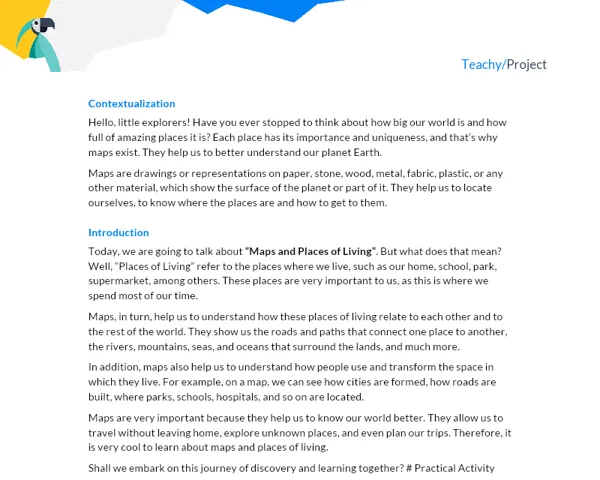Context
Rocks are the bricks that form the Earth's crust, and each one has a unique story that allows us to learn more about the Earth's history. These 'bricks' can be divided into three categories: igneous, sedimentary, and metamorphic rocks. Each of these categories has distinct formation and characteristics, providing valuable clues about our planet's past.
Igneous rocks, also known as magmatic rocks, are formed when magma (molten rock material) cools and solidifies. This process can occur on the Earth's surface - forming extrusive igneous rocks, such as basalt - or below the surface - forming intrusive igneous rocks, such as granite.
Sedimentary rocks are formed by the sedimentation of particles transported by wind, water, or ice. These sediments accumulate in layers and, over time, are compacted and cemented to form rocks. Examples include sandstone and limestone.
Finally, metamorphic rocks result from the transformation of other rocks. This process occurs when rocks are subjected to high temperatures and pressures, leading to the reorganization of their minerals. Well-known examples are marble and gneiss.
The Earth is a dynamic sphere in constant evolution. The study of its rocks provides important information about its geological history, the processes that shaped its surface, and even the natural resources it harbors. Knowing and understanding the different types of rocks allows us to predict, for example, in which regions it is more likely to find oil or diamonds, or to understand the processes of mountain chain and volcano formation.
Note that rocks are not only at the foundation of physical geography studies but also have significant implications for science, the economy, and even for art and culture. Marble, for example, has been used for centuries in sculptures and constructions due to its pleasant appearance and durability.
To delve deeper into this subject, some reliable sources are:
- General Geology, by Keller - a solid reference in the field of geology, available in many libraries and bookstores.
- The US Geological Survey website, which has a wealth of information on geology, including specific sections on each type of rock.
- The Geology Total channel on YouTube, which features a series of educational videos on geology, including a specific playlist on types of rocks.
Practical Activity
Activity Title: Rock Explorers
Project Objective: Identify and classify rocks into their respective categories (igneous, sedimentary, and metamorphic), understand the formation and transformation processes of each type, and analyze the relevance of these rocks in the geographical and socioeconomic context.
Detailed Project Description:
The 'Rock Explorers' project is to be carried out in groups of 3 to 5 students and has an estimated duration of two to four hours per group member. Students will select a sample of each type of rock (igneous, sedimentary, and metamorphic), which can be found in nature, mineral stores, or even in urban constructions and structures.
Students should research and identify the characteristics that allow them to classify each rock into its corresponding type. Additionally, they should study the formation processes of each type of rock, as well as the relationship with climate, soil, relief, and vegetation.
Finally, they should discuss, in geographical and socioeconomic terms, the importance of the chosen rock. For example, a sedimentary rock like sandstone may be linked to the formation of aquifers, while an igneous rock like granite may be related to gemstone mines or used in construction.
Materials Needed:
- Internet access for research
- Selection of rock samples (one igneous, one sedimentary, and one metamorphic)
- Magnifying glass or microscope (optional)
Detailed Step-by-Step:
- Organize with your group and define which rocks will be studied. Remember to choose one of each type (igneous, sedimentary, and metamorphic).
- Research and compile information on the characteristics that define the class of each chosen rock.
- Study and note the processes that lead to the formation of each type of rock.
- Relate each rock to aspects of climate, soil, relief, and vegetation. How does the presence of this rock influence soil composition? What types of vegetation are found and what climate is found near regions with these rocks?
- Discuss and record the geographical and socioeconomic importance of each rock. What is its use? How does it impact the economy and society?
- After the investigation, each group should prepare a presentation about the chosen rocks. This presentation can be a slide, a poster, or a video, as long as it contains all the researched information.
Project Delivery:
Students must deliver the presentation and a written report on the project. The report needs to contain four sections:
- Introduction: Contextualization of the theme, relevance, and project objective.
- Development: Detailed description of the theory, methodology used, and the results obtained. It is important to specify the characteristic of each rock and the formation processes. Relate the rocks to aspects of climate, soil, relief, and vegetation, and discuss their geographical and socioeconomic importance.
- Conclusions: What was learned from the project? What is the importance of studying rocks? How can this knowledge be applied?
- Bibliography: List of all sources used in the project.
This project aims to develop technical skills, such as knowledge of rock formation and its interference in the landscape, and socio-emotional skills, such as time management, communication, and problem-solving.

